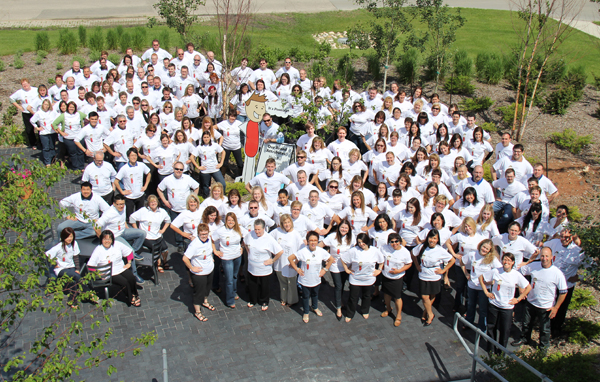
Enabling a culture of innovation
Find out how CWB National Leasing empowers employees to share ideas and innovate.
See full post

By: Wendy Guilbault, Manager, Human Resources
This post is part two in our hiring the right employee blog series:
If you missed Part 1: How to Recruit, be sure to check it out to ensure your hiring process goes as smoothly as possible.
Decide who will take part in the interviews with the candidates. Having two interviewers is ideal, usually the hiring manager and a representative from human resources, but this will vary depending on the position and the size of the organization. Meet with the interviewers ahead of time to clarify each person’s role in the interview process – for example, who will meet and greet the candidate and who will ask which questions.
It’s important to plan your questions in advance to make sure you get all the information you need from each interview. First, prepare a list of phone interview questions – here are some examples for what to ask applicants over the phone:
Next, prepare a list of in-person interview questions. It’s helpful to include behavioural-based, cultural fit and situational questions in the in-person interviews. Ask only legal interview questions that highlight the candidate's strengths and weaknesses to determine job fit. You can’t ask questions that will reveal information that can lead to bias in hiring – for example, you can’t ask questions about the candidate’s race, ancestry, political belief, gender, marital or family status, age, disabilities, criminal record, or personal questions regarding things like height and weight.
Behavioural-based questions will identify candidates who have the characteristics and traits that are necessary to do the job – here are some examples:
Cultural fit questions will determine whether or not the candidate is a good fit for your organization – here are some examples:
Situational interview questions determine how a candidate will handle a certain situation or what they would do under certain circumstances – here are some examples:
It’s important to ask each candidate the same interview questions to ensure the interview process is fair for all applicants. As well, remember to identify desired answers for each question. By doing this, interviewers are able to do a better assessment following the interview.

CWB National Leasing employees gather for a sunny group photo in 2012.
Read through all the applications you received from the job posting, and narrow down a list of applicants you wish to contact for a phone interview.
Depending on the size of your organization and the volume of applications you receive, it may be beneficial to use an applicant tracking system to organize the applications.
Conducting effective and efficient phone interviews is an excellent way to pre-screen candidates and save time and money in the interview process. The phone interview allows you to hear how the applicant talks on the phone (professional, loud, unprofessional), and to determine if his or her qualifications, experience, and salary expectations are congruent with the position and the organization prior to conducting an in-person interview.
When calling an applicant, introduce yourself and the organization you represent, and say you’re calling regarding the application he or she submitted. Explain that the first step in your recruitment process is conducting a phone interview. Make it clear how long the phone interview will take, and ask if it’s a good time to answer some questions. At the end of the phone call, thank the candidate for their time, and tell them once all the phone interviews have been completed, you will be contacting those selected for an in-person interview.
Following the phone interviews, decide which candidates you would like to bring in for a face-to-face interview.
This may be the most important step, because it’s your chance to get to know the person. Schedule an interview with the candidates you want to meet, and make sure to let them know ahead of time how long the interview will take. Review your list of questions prior to the interviews and ensure your questions address skill, team, and corporate requirements, and that all candidates will be asked the same questions.
Remember the candidates are going to be nervous – help them relax by greeting them with a warm smile and a handshake. Offer each candidate a glass of water, coffee, or tea, and establish rapport with a bit of small talk. Next, give an interview introduction:
At the end of the interview, ask the candidate for references if he or she didn’t already provide some. Close the interview by explaining the next steps and when they can expect to hear from you.
Sometimes, you may have more than one candidate who really stands out. In this situation, testing can assist in making the decision; for example, you may want to have candidates complete a writing test if the position will involve a lot of writing. Another option is to give candidates a take-home assignment to complete. If you decide to use this method, only test your finalists and make sure each person goes through the same testing.
Complete a post-interview evaluation sheet immediately after each interview to assess the quality of each candidate’s responses and to capture your thoughts regarding each candidate’s capacities related to your specific focus areas. This information should be recorded both numerically – on a scale from one to 10 – and in short commentary form. If multiple interviewers are involved, have each person complete a post-interview rating sheet individually and meet afterward to review and compare impressions.
Your next step following the interview stage is selection. Stay tuned for tomorrow’s post, Part 3: How to Select, for tips on selecting the right person for the job.
Posted in General business advice,
Contact us and we'll call you right away